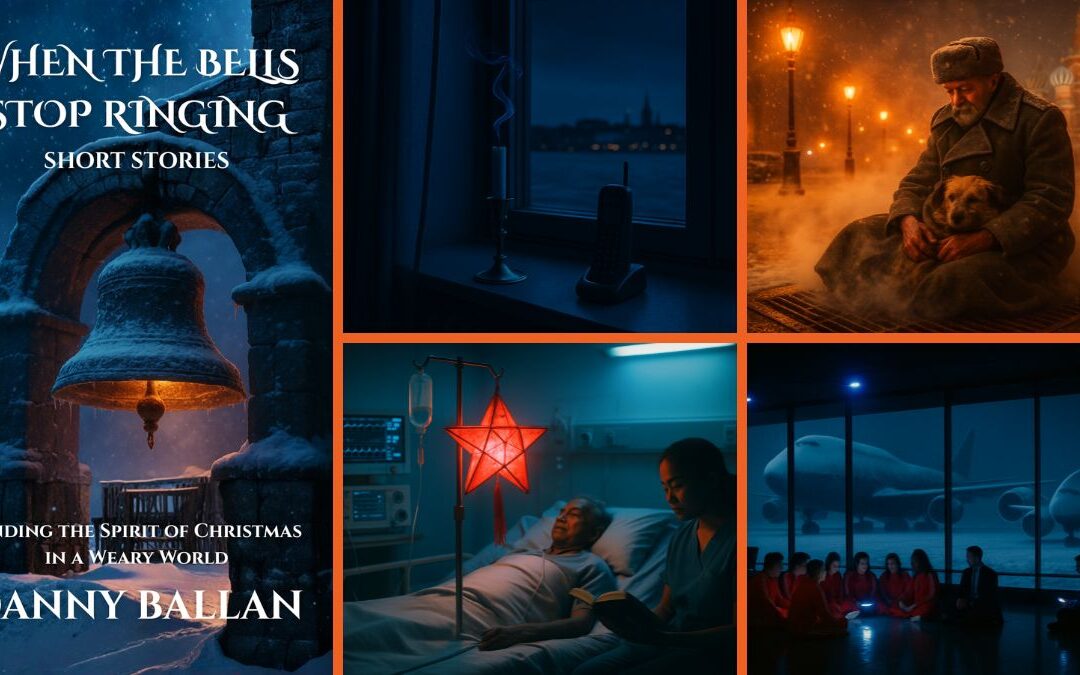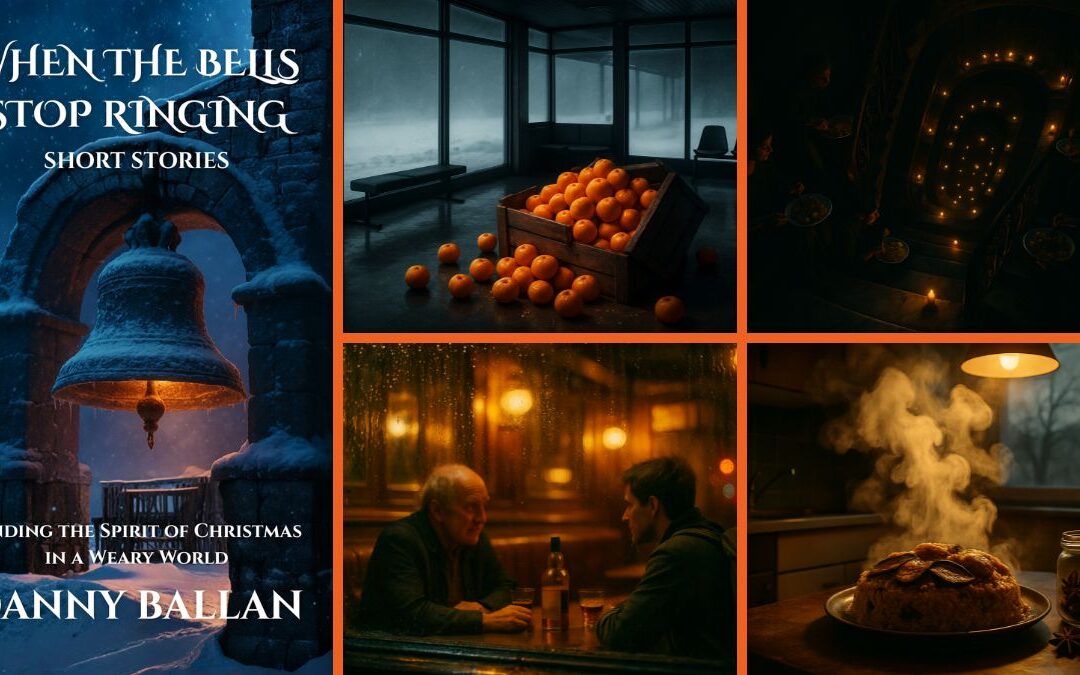How to Approach This Lesson
Ready to bring your stories to life? This lesson focuses on one of the most creative and rewarding writing skills: narrative description. We’re going to take a simple memory and turn it into something a reader can see, hear, and feel. The best way to learn is by doing, so we’ll start with a basic idea and layer on details step-by-step. Follow the process, think about the choices we make, and see how a few simple techniques can completely transform your writing.
The Challenge: Painting a Picture with Words
Here is our writing task for today: Write a narrative paragraph describing a childhood memory related to music.
This is a classic task you might encounter in exams like the TOEFL or Cambridge B2/C1, where you’re asked to describe a personal experience. The goal isn’t just to say what happened; it’s to make the reader feel like they were there with you. The key skill we’re going to master is “Show, Don’t Tell.”
So, what does that mean?
- Telling: “The music made me happy.” (Boring!)
- Showing: “A wide, uncontrollable grin stretched across my face as the first chords chimed from the speakers, and I felt a buzzing energy shoot down to my tapping feet.” (Much better!)
Our plan is simple. We’ll build our paragraph in layers:
- The Core Idea: Start with the basic facts of the memory.
- Sensory Details: Add what you saw, heard, smelled, tasted, and touched.
- Figurative Language: Use similes and metaphors to create powerful images.
- Feelings and Reflections: Add the emotional layer. How did it make you feel then, and how do you see it now?
Let’s begin crafting our memory.
Your Step-by-Step Guide to Vivid Narration
Step 1: The Core Idea – The Skeleton of Your Story
[ppp_patron_only level=5]
First, let’s get the basic information down. No fancy language yet. Just the facts.
Core Idea:
I remember listening to my dad’s vinyl records in our living room. He played a Queen song. I was probably six years old. The living room had a brown carpet.
This is our starting point. It’s functional but has no life. It tells the reader what happened. Now, let’s show them.
Step 2: Adding Sensory Details – Breathing Life into the Scene
This is where the magic starts. Let’s think about the five senses. What did the scene look, sound, and feel like?
- Sight: The “afternoon sun,” the “scratchy brown carpet,” the “spinning black vinyl,” the “gleam of the needle.”
- Sound: The “soft hiss and crackle” of the record, the “booming opening chords,” Freddie Mercury’s voice.
- Touch: The “rough texture of the carpet” on my small hands, the “warmth of the sun.”
- Smell: Maybe the “faint, dusty smell of old cardboard” from the record sleeves.
Let’s weave these details into our core idea.
A Common Mistake: Just listing the details. “The carpet was brown and scratchy. The sun was warm. The record was black.” This feels like a list, not a story. We need to integrate them smoothly.
Our Second Draft (with Sensory Details):
The memory is bathed in the hazy gold of a late afternoon sun. I was six, sitting on the scratchy brown carpet of our living room, a universe of texture beneath my small hands. My father carefully placed a black vinyl disc onto the turntable, and I watched, mesmerized, as the needle found its groove with a soft hiss and crackle. Then, the music exploded from the speakers.
This is already much better! We can see the room and hear the record starting.
Step 3: Using Figurative Language – Creating Unforgettable Images
Figurative language (similes, metaphors) helps you explain a feeling or idea by comparing it to something else. It makes your writing more creative and memorable.
The music “exploded.” That’s a good start (a metaphor). Let’s add another one. How did the voice sound?
Let’s try a simile (a comparison using “like” or “as”).
- Freddie Mercury’s voice wasn’t just loud; it was like a bolt of lightning, powerful and thrilling.
Let’s add that in.
Our Third Draft (with Figurative Language):
The memory is bathed in the hazy gold of a late afternoon sun. I was six, sitting on the scratchy brown carpet of our living room, a universe of texture beneath my small hands. My father carefully placed a black vinyl disc onto the turntable, and I watched, mesmerized, as the needle found its groove with a soft hiss and crackle. Then, the opening chords of Queen’s ‘Bohemian Rhapsody’ exploded from the speakers. Freddie Mercury’s voice shot out like a bolt of lightning, a force of nature that seemed too big for our small house.
Now the music feels powerful and alive.
Step 4: Feelings and Reflections – The Heart of the Story
We have the scene, but what did it mean? How did it make you, the six-year-old, feel? This is where you add the emotional core.
Our Final, Polished Paragraph:
The memory is bathed in the hazy gold of a late afternoon sun. I was six, cross-legged on the scratchy brown carpet of our living room, a whole universe of texture beneath my small hands. My father, with the reverence of a priest, placed a black vinyl disc onto the turntable. I watched, mesmerized, as the needle found its groove with a soft hiss and crackle before the opening chords of Queen’s ‘Bohemian Rhapsody’ exploded from the giant speakers. Freddie Mercury’s voice shot out like a bolt of lightning, a force of nature that seemed far too big for our small house. I didn’t understand the words, but I understood the feeling: a thrilling, boundless energy that made me want to jump up and sing along, even though I didn’t know how. In that moment, I realized music wasn’t just sound; it was a story, a feeling, a place you could go to.
We added the internal feeling (“a thrilling, boundless energy”) and a final sentence of reflection that gives the memory its meaning. This is the difference between a simple description and a true narrative.
Key Takeaways & Your Next Challenge
Let’s recap the magic formula:
- Start with the facts, then build on them.
- Engage the five senses to ground the reader in the scene.
- Use figurative language (similes and metaphors) to create powerful, unique descriptions.
- Don’t forget the emotion. Explain how the event made you feel to give it meaning. This is the essence of “Show, Don’t Tell.”
Your Optional Writing Challenge:
Ready to try it yourself? Write a single narrative paragraph (approx. 150 words) describing a specific memory you have related to food. It could be the taste of your grandmother’s cooking, a disastrous attempt at baking, or the best meal you’ve ever had.
Use the four steps we practiced. The only way to get better at painting with words is to pick up the brush and start. Go for it!
[/ppp_patron_only]










0 Comments